
The French and Indian War (1754–1763) was a theater of the Seven Years' War, which pitted the North American colonies of the British Empire against those of the French, each side being supported by various Native American tribes. At the start of the war, the French colonies had a population of roughly 60,000 settlers, compared with 2 million in the British colonies. The outnumbered French particularly depended on their native allies.

The Last of the Mohicans is a 1920 American Western silent film written by Robert A. Dillon, adapted from James Fenimore Cooper's 1826 novel of the same name. Clarence Brown and Maurice Tourneur co-directed the film. It is a story of two English sisters meeting danger on the frontier of the American colonies, in and around the fort commanded by their father. The adventure film stars Wallace Beery, Barbara Bedford, Lillian Hall, Alan Roscoe and Boris Karloff in one of his earliest silent film roles. Barbara Bedford later married her co-star in the film, Alan Roscoe in real life. The production was shot near Big Bear Lake and in Yosemite Valley.
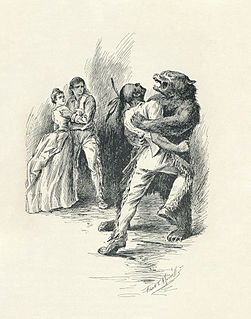
The Last of the Mohicans: A Narrative of 1757 is a historical romance written by James Fenimore Cooper in 1826.

The Beaver Wars, also known as the Iroquois Wars or the French and Iroquois Wars were a series of conflicts fought intermittently during the 17th century in North America throughout the Saint Lawrence River valley in Canada and the lower Great Lakes region which pitted the Iroquois against the Hurons, northern Algonquians and their French allies. As a result of this conflict, the Iroquois destroyed several confederacies and tribes through warfare: the Hurons or Wendat, Erie, Neutral, Wenro, Tionontate, Susquehannock, Mahican and northern Algonquins whom they defeated and dispersed, some fleeing to neighboring peoples and others assimilated, routed, or killed.

Magua is a fictional character and the main antagonist in the 1826 novel The Last of the Mohicans by James Fenimore Cooper. This historical novel is set at the time of the French and Indian War. A Huron Indian chief, he is also known by the French alias "Le Renard Subtil".

Lake George, nicknamed the Queen of American Lakes, is a long, narrow oligotrophic lake located at the southeast base of the Adirondack Mountains, in the northeastern portion of the U.S. state of New York. It lies within the upper region of the Great Appalachian Valley and drains all the way northward into Lake Champlain and the St. Lawrence River drainage basin. The lake is situated along the historical natural (Amerindian) path between the valleys of the Hudson and St. Lawrence Rivers, and so lies on the direct land route between Albany, New York, and Montreal, Quebec, Canada. The lake extends about 32.2 mi (51.8 km) on a north–south axis, is 187 ft (57 m) deep, and ranges from one to three miles in width, presenting a significant barrier to east–west travel. Although the year-round population of the Lake George region is relatively small, the summertime population can swell to over 50,000 residents, many in the village of Lake George region at the southern end of the lake.
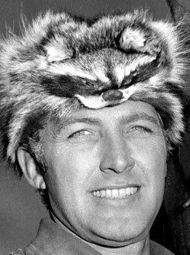
John Lewis Hart, also credited as John Hilton, was an American film and television actor. In his early career, Hart appeared mostly in westerns. Although Hart played mostly minor roles in some fairly well known films, he was probably best known for having replaced Clayton Moore in the television series The Lone Ranger for one season (1952–53).

The Leatherstocking Tales is a series of five novels by American writer James Fenimore Cooper, set in the eighteenth-century era of development in the primarily former Iroquois areas in central New York. Each novel features Natty Bumppo, a frontiersman known to European-American settlers as "Leatherstocking", "The Pathfinder", and "the trapper". Native Americans call him "Deerslayer", "La Longue Carabine", and "Hawkeye".

The Last of the Mohicans is a 1992 American epic historical drama film set in 1757 during the French and Indian War. It was directed by Michael Mann and was based on the 1826 novel The Last of the Mohicans: A Narrative of 1757 by James Fenimore Cooper and the 1936 film adaptation, owing more to the film than the novel. The film stars Daniel Day-Lewis and Madeleine Stowe, with Jodhi May, Russell Means, Wes Studi, Eric Schweig, and Steven Waddington in supporting roles.

George Montgomery was an American actor, best known for his work in Western films and television. He was also a painter, director, producer, writer, sculptor, furniture craftsman, and stuntman. He was a boyfriend of Hedy Lamarr.

Sheldon Leonard Bershad was an American actor, producer, director, and writer.
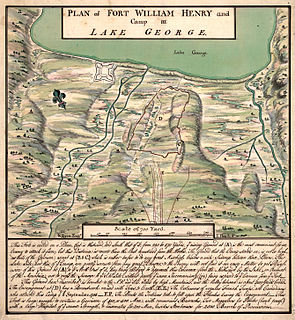
The Siege of Fort William Henry was conducted by French General Louis-Joseph de Montcalm against the British-held Fort William Henry. The fort, located at the southern end of Lake George, on the frontier between the British Province of New York and the French Province of Canada, was garrisoned by a poorly supported force of British regulars and provincial militia led by Lieutenant Colonel George Monro. After several days of bombardment, Monro surrendered to Montcalm, whose force included nearly 2,000 Indians from various tribes. The terms of surrender included the withdrawal of the garrison to Fort Edward, with specific terms that the French military protect the British from the Indians as they withdrew from the area.
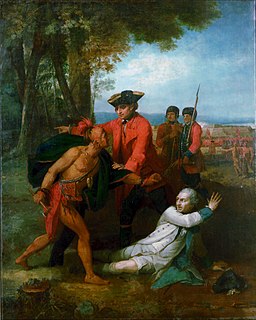
The Battle of Lake George was fought on 8 September 1755, in the north of the Province of New York. It was part of a campaign by the British to expel the French from North America, in the French and Indian War.

The Last of the Mohicans is a 1936 American Western film based on the 1826 novel The Last of the Mohicans by James Fenimore Cooper. It was directed by George B. Seitz and stars Randolph Scott, Binnie Barnes and Henry Wilcoxon.

This is a list of films featuring Harry Carey.
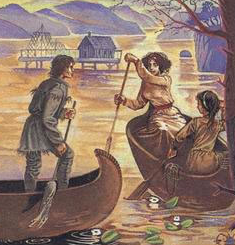
Nathaniel "Natty" Bumppo is a fictional character and the protagonist of James Fenimore Cooper's pentalogy of novels known as the Leatherstocking Tales.
The Battle of La Belle-Famille occurred on July 24, 1759, during the French and Indian War along the Niagara River portage trail. François-Marie Le Marchand de Lignery's French relief force for the besieged French garrison at Fort Niagara fell into Eyre Massey's British and Iroquois ambush. This action formed part of the larger Battle of Fort Niagara.
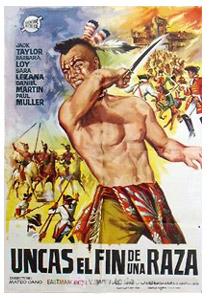
Fall of the Mohicans is a 1965 Spanish-Italian historical western adventure film directed by Mateo Cano and starring Jack Taylor, Paul Muller and Sara Lezana. The film is based on James Fenimore Cooper's 1826 novel The Last of the Mohicans, but made in the style of a Spaghetti Western. It was shot on location in the Tabernas Desert of Almería Another adaptation of the story The Last Tomahawk was released the same year by Germany's Constantin Film.
Last of the Redskins is a 1947 American Western film directed by George Sherman and starring Joh Hall and Michael O'Shea. The film was shot in Vitacolor but released in Cinecolor.
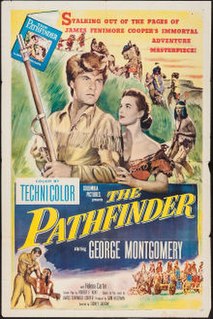
The Pathfinder is a 1952 American Western film directed by Sidney Salkow and starring George Montgomery.
















